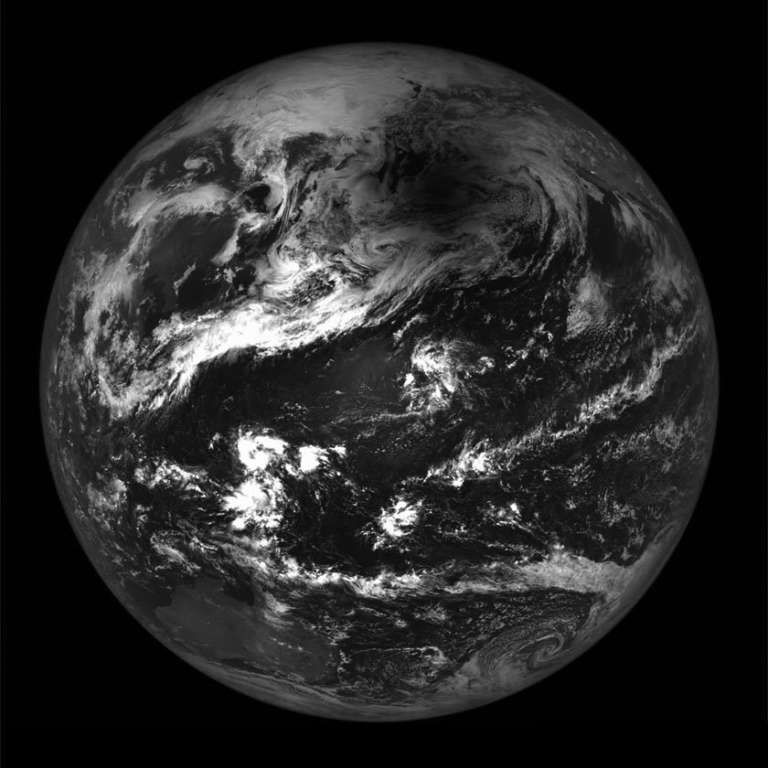A solar eclipse - as viewed from the Moon

Lunar Reconnaissance Orbiter turned toward Earth to catch a view of the Moon's shadow passing across the Aleutian Islands during the May 12, 2012 solar eclipse. The Lunar Reconnaissance Orbiter Camera team explained some of the challenge inherent in the acquisition of this image on their website:
The LROC NAC cannot easily acquire images of the Earth, and acquiring Earth views requires a significant amount of planning. The NAC is a line scanner, meaning that it has only one row of 5064 pixels per camera. Instead of snapping a single frame, an image is built up by the motion of the spacecraft in orbit about the Moon (about 1600 meters per second). To obtain an image of the Earth the spacecraft is turned 180° to face the Earth, then the spacecraft is pitched as quickly as possible (one-tenth of a degree per second), so that the image is built up line by line. You can see that two of the frames in the animated image below are slightly clipped, because LRO's timing wasn't perfect and the NAC ran out of lines before completing the scan (the NAC buffer is filled up after 52,240 lines, which is 256 Mbytes of data).
Because it was an annular eclipse, the shadow isn't totally dark; some sunlight still made it down to viewers of the eclipse as it passed over. The image below provides a zoomed in view of the Moon's shadow.


 Explore Worlds
Explore Worlds Find Life
Find Life Defend Earth
Defend Earth

